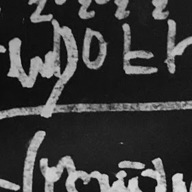Riemann Sums and Definite Integrals
Contents
Riemann Sums and Definite Integrals#
OBJECTIVE
Approximate area under a curve using Riemann Sums
Investigate patterns as we move to infinite rectangles
Define the Definite Integral formally and informally
Use
pythonto determine the definite integral
import matplotlib.pyplot as plt
import numpy as np
import pandas as pd
from scipy.integrate import quad
Riemann Sum#
Starting where we left off with an approximation of the area under a function, on a closed interval we aim to determine a general formula for the area under a curve based on the following inputs:
A function \(f\)
A domain \([a, b]\).
A number of approximating rectangles \(n\)
We use these to determine the area as a sum of areas of rectangles with some width and height.
we make life easier by making the rectangles all equal width and are left with the idea:
Riemann Sum: A Definition#
In mathematics, a Riemann sum is a certain kind of approximation of an integral by a finite sum. It is named after nineteenth century German mathematician Bernhard Riemann. One very common application is approximating the area of functions or lines on a graph, but also the length of curves and other approximations. – Source
A Riemann sum \(S\) of \(f\) over \(I\) with partition \(P\) is defined as:
where
\(\displaystyle \Delta x_{i}=x_{i}-x_{i-1}\) and \(x_{i}^{*} \in [x_{i-1},x_{i}]\)
PROBLEM
Find an approximation for the area under the curve \(f(x) = x^3\) on \([1, 3]\) with \(n = 5\).
Consider the function \(f(x) = 4 - x^2\) on the interval \([-2,2]\).
Draw a plot of the function
Use the above formula for \(L(4)\) to find an approximation for the area under the curve.
Taking it to the limit#
What happens if we increase the number of rectangles?
x = np.linspace(-2,2,100)
def f(x): return x**2
def riemann_slider(n):
a = x[0] #left endpoint
b = x[-1] #right endpoint
width = (b-a)/n #width of rectangles
plt.plot(x, f(x), color = 'black') #plot the function
bases = np.array([a + width*i for i in range(n)]) #determine base points
plt.bar(bases, f(bases), width = width, align = 'edge',
color = 'orange', edgecolor = 'black') #plot the rectangles
areas = [width * height for height in f(bases)] #find the area
plt.title(f'The approximate area under f is {sum(areas): .2f}')
from ipywidgets import interact
import ipywidgets as widgets
interact(riemann_slider, n = widgets.IntSlider(1, min = 1, max = 100, step = 2));
The Definite Integral#

In mathematics, an integral assigns numbers to functions in a way that describes displacement, area, volume, and other concepts that arise by combining infinitesimal data. The process of finding integrals is called integration. Along with differentiation, integration is a fundamental operation of calculus, and serves as a tool to solve problems in mathematics and physics involving the area of an arbitrary shape, the length of a curve, and the volume of a solid, among others.
Examples
\(\int_0^2 x^2 dx\)
\(\int_{-\pi}^{\pi} \sin{x}dx\)
from scipy.integrate import quad
#define the function
#determine domain
#plot it
#find area
#define the function
#determine the domain
#plot it
#find the area
Application II: Net Change Theorem#
The net change theorem considers the integral of a rate of change. It says that when a quantity changes, the new value equals the initial value plus the integral of the rate of change of that quantity. The formula can be expressed in two ways. The second is more familiar; it is simply the definite integral.
EXAMPLE: Suppose a car is moving due north (the positive direction) at 40 mph between 2 p.m. and 4 p.m., then the car moves south at 30 mph between 4 p.m. and 5 p.m.
PROBLEMS
Given a velocity function \(v(t) = 3t - 5\) (in meters per second) for a particle in motion from time \(t = 0\) to time \(t = 3\), find the net displacement of the particle.
Find the net displacement and total distance traveled in meters given the velocity function \(f(t) = .5e^t - 2\) over the interval \([0,2]\).
Application III: Area Between Curves#
Consider the curves \(f(x) = \sqrt{x}\) and \(g(x) = x^2\).
#define the functions
#plot them together
#examine area
Problem
Area between \(y = x^2\) and \(y = x^3\)
\(y = e^x\) and \(y = e^{2x - 1}\)
\(y = \cos{x}\) and \(y = \cos^2{x}\) on \([-\pi, \pi]\)


